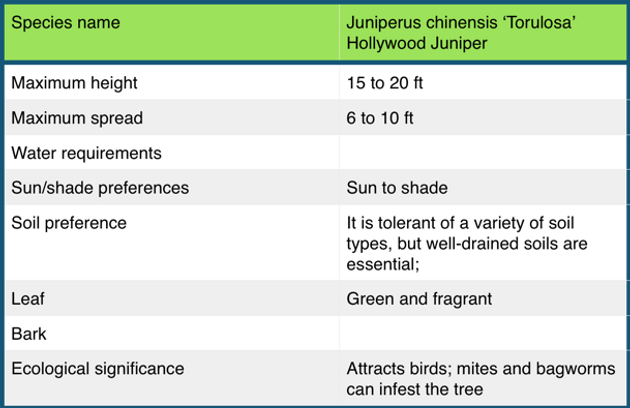Kevin Wang
Subdivision and Planned Unit Development Planning
Flora and Fauna
Flora and Fauna
Selecting the species of trees, shrubs, perennials, and annuals that are best suited to soil type of Oklahoma is paramount. All trees in the study were selected because of their suitability to the City of Norman, Oklahoma. Proper selection and care is vital to the health and longevity of trees in the urban environment. In turn, a healthy, diverse urban forest offers aesthetic, social, economic, and environmental benefits to our communities. Trees can increase property values, bolster economic reinvestment, improve air quality, help conserve energy, provide shelter and food for wildlife, enhance the visual image of our community, and heighten social well-being.
LaGro (2013) suggests that human systems are integrally connected with natural systems Investing strategically in nature’s infrastructure could be transformative— advancing environmental protection while making our communities healthier and more resilient to climate change. However, study finds that in recent years, according to the U.S. Geological Survey, about 10,000 miles (16,000 kilometers) of paved roads and 1 million new homes were built annually. These impervious surfaces— and many of the largest metropolitan areas in the United States —are located in watersheds supplying the nation’s major rivers and estuaries. Because of this proximity, aquatic ecosystems— and, in many communities, municipal water supplies— are at significant risk (LaGro, 2013). Therefore, the overall objective of introducing the flora and fauna into the Griffin Memorial Hospital community is improving plant biodiversity and providing habitat in an increasingly urban environment.
Before introducing the flora and fauna, it is significant to know the regional temperature that we experience in City of Norman. Inspired by the Aubrey Hammontree, 2014. Putting Down Roots, I created the Table of Average Monthly Temperature and Rainfall Over 30 Year. The 30 year, 1984 to 2014, average temperature in the Central of Oklahoma area is from 37.85 (in December) to 81.92 (in July) degrees Fahrenheit. Although most plants will tolerate short periods of extreme temperatures, prolonged periods of heat or cold may affect the viability of plants on the edges of their zone classification.
In addition to the average temperatures, we should also consider the area’s precipitation rate in order to make the optimal selections of the flora and fauna. The normal precipitation rate for the Central of Oklahoma area is from 1.44 inch (in January) to 5.02 inch (in May) monthly; however, Oklahoma has been known to experience periods of drought, and often a lack of snow and rain in the winter will result in a winter drought.

In terms of the climate conditions and the soil type, I suggested several types of trees that would be suitable to the Griffin Memorial Hospital area.






Furthermore, there are several species classified as endangered in the Cleveland County, including Whooping Crane (Grus americana), Interior Least Tern (Sterna antillarum), Black-capped Vireo (Vireo atricapillus), Piping Plover (Charadrius melodus), and Arkansas River Shiner (Notropis girardi) (Oklahoma Department of Wildlife Conservation, 2011). Therefore, planners should also introduce species that interact with native species as well as avoid the issue of invasive species in order to develop biodiversity community. I suggested several types of birds that would be suitable to the Griffin Memorial Hospital area.

